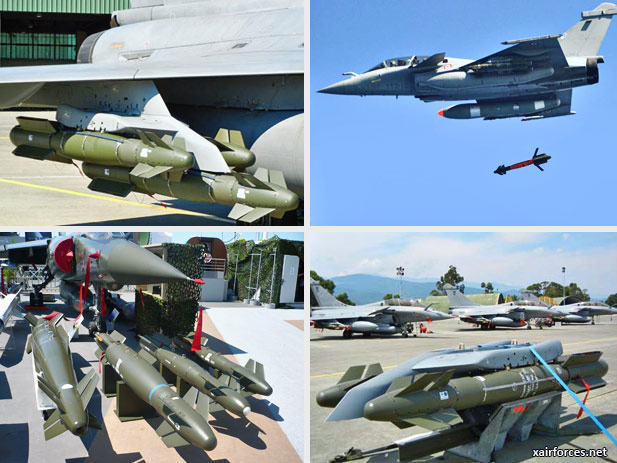
AASM zeroes in on moving targets and is proven on Rafale

Sagem is ready to begin delivery of the AASM SBU-54 laser terminal guidance version of the Hammer weapon to the French Air Force pending administrative clearance by the DGA.
Clearance is expected within a matter of weeks and will pave the way for the weapon to enter operational service later this year.
Final qualification firing of the air-to-ground missile was carried out by the DGA in December 2012. The test firing was conducted by a Rafale fighter - still a contender for the UAE fighter - at the DGA’s missile range in Biscarrosse, and has been declared a complete success.
The target for the test firing was a remotely piloted all-terrain vehicle that travelled at varying speeds before reaching a speed of 50km/h at the time of impact approximately 15km from the Rafale. The weapon was launched from the aircraft at an extreme off-axis angle of 90° and hit the target at an oblique angle, the vehicle was illuminated by the aircraft’s Damocles pod during the final seconds of the AASM’s flight. The weapon struck the target with an accuracy of less than one metre.
Speaking at Sagem’s Montluçon facility in January 2013, Jean-Christophe Mugler, marketing and sales director, deputy, Sagem Avionics Division, said the firing was reflective of the weapon’s extreme agility, manoeuvrability and accuracy, adding that the SBU-54 brings extended capabilities to the Hammer family.
Two previous versions of the weapon are already qualified on Rafale – the INS/GPS (SBU-38) and INS/GPS/ infrared (SBU-64), with the latest SBU-54 guidance kit featuring a laser seeker in place of the infrared imager of the SBU-64, with tracking algorithms which are activated during the terminal phase, allowing the weapon to engage agile, moving land or naval targets illuminated by a ground or airborne laser designator.
‘With INS GPS, the SBU-38 can be used when the target coordinates are very well known,’ Mugler said. ‘However in the case of target location error, GPS unavailability or jamming, the SBU-64 is a better choice, as this weapon will be guided toward rough coordinates and then use scene-matching tracking algorithms during the terminal phase to find the target within the scene and hit the target.’
With a simplified model of the scene around the target first being uploaded to the SBU-64, the infrared imager allows the AASM to recalculate its trajectory during the last few seconds prior to impact, using image recognition algorithms. This allows the AASM to hit its target with the highest possible accuracy, even if GPS coordinates are incorrect, or the GPS signal is unavailable. The SBU-54 adds to this, using powerful algorithms for detection and flightpath slaving to a laser pointer to strike mobile targets.
‘Now, the SBU-54 brings a mobile target capability to the family,’ Mugler said. ‘If the laser spot is locked on a mobile target, such as a moving vehicle, the weapon uses powerful algorithms for detection and flightpath slaving to that laser point to hit that target - thanks to the high manoeuvrability of its double-canard configuration.’
Source: (arabianaerospace.aero) News - 28 February 2013
Photo: The French Air Force Sagem AASM SBU-54 laser terminal guidance version (Photo by Sagem)
(28.02.2013)
|